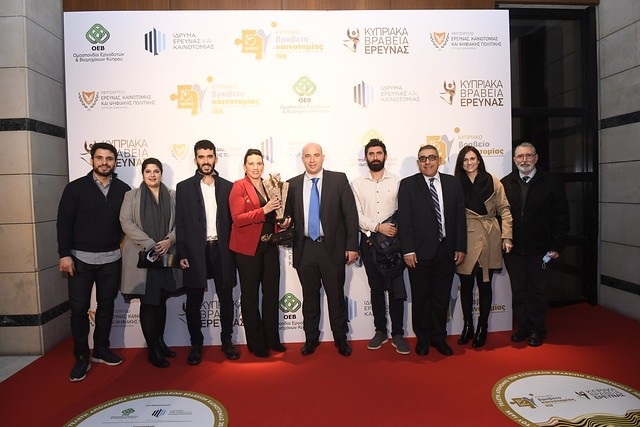- Home
- Industry
- Industry news
- TamaTA–INNOV: Boosting...
TamaTA–INNOV: Boosting the SMEs-Research facilities cooperation
20-03-2023
TamaTA-Innov is the European programme - funded by Horizon 2020 - which aims to boost innovation in European SMEs by providing access to a range of European light source facilities to conduct their research. The second call for SMEs through the programme is now officially open and the deadline for submitting proposals is 28th July 2023.
Share
The pilot project LEAPS-INNOVATION focuses on the implementation of new strategies and activities for long-term partnerships between industry and European light sources, synchrotrons, and free-electron lasers, with their tens of thousands of users. LEAPS-INNOV aims to kick-start the implementation of the LEAPS Technology Roadmap and, simultaneously, foster a partnership with European industry through open innovation.
In this context, TamaTA-Innov comes to life: the European programme - funded by Horizon 2020 - aims to boost innovation in European SMEs by providing access to a range of European light source facilities to conduct their research. The second call for SMEs through the programme is now officially open and the deadline for submitting proposals is 28th July 2023. The portal for SMEs to access the call is Way For Light, which offers a single-entry point to the European synchrotrons and free electron lasers: ALBA, KIT-SYNCHROTRON, ELETTRA, ESRF, DESY, DIAMOND, XFEL, MAX IV, PSI and SOLEIL.
TamaTa- Innov success story: AmaDema and ESRF
A concrete example of the Tamata-Innov impact for European SMEs, is the successful case of AmaDema, a small company based in Cyprus which focuses on the enhancement of technical fabrics and prepregs (laminate composites of fibre sheets that are impregnated with polymer resins) to be used in fibre-reinforced composites. AmaDema deals with the design and manufacturing of advanced composite materials, by identifying the problems and needs of customers in a variety of industries such as aviation, defence, sports, automotive, shipping, etc., and by providing them with a variety of services and products solutions in the field of materials.
AmaDema has introduced NanoWeld®, a revolutionary, easily adjustable technology that significantly enhances the mechanical properties of fibre-reinforced polymer composites (FRPs), allowing the use of less material (fewer composite layers) to achieve the same load-bearing capacity. NanoWeld® technology increases composite performance by up to 100% for certain mechanical properties and reduces their weight by up to 15% compared to standard composites. NanoWeld® creates a hierarchical reinforcement at the damage-prone regions (interlayer), using nanofibres and protruding nanoparticles that work as anchors with the matrix, resulting in the increased mechanical performance of FRP composites.

In the picture, AmaDema’s core team at the Cyprus Innovation Awards by Cyprus Employers and Industrialists Federation (OEB).
Thanks to Tamata-Innov, AmaDema’s had the opportunity to collaborate with ESRF, to expand AmaDema’s understanding of the underlying mechanisms of NanoWeld® through the investigation of the various interfaces formed between the material phases. AmaDema will use these insights to better control the overall performance of the final product and strengthen its NanoWeld® portfolio.
Katerina Loizou, AmaDema Research and Development Engineer, kindly agreed to answer a few questions, showing a clear overview of what Tamata-Innov can do for and with SMEs and giving a flavour of what cooperation with a research infrastructure such as the ESRF looks like.
• Hi Katerina, thanks a lot for accepting our interview invitation. Could you tell us a bit more about the tests run at ESRF and what were the results?
Two different types of samples were processed, involving different scales and interfaces. The first type of test involved the interface formed between the nanoparticles and the polymeric nanofibres and was tested using nano-tomography. The second type of test involved microtomography of the interfaces formed between nanofibres and technical carbon fibres. In both cases, the results showcased the intricate and complex interface structure, enabling the 3D reconstruction of the structures.
• What were the initial expectations?
The results as expected, helped visualise the interfaces formed and deconvolute the interactions at nano and microscale, enabling the in-depth characterisation of the interfaces.
• What are your impressions of the process and the usefulness of the results you obtained?
The overall collaboration with ESRF staff has been very fruitful and the process and protocols followed were clear from the beginning. What really made the difference was the professional and scientific approach followed by everyone involved, and their eagerness to understand the particularities of the requested experiments.
• Can you tell a bit more about the quality (resolution, detail, specificity, etc) of the data you obtained at the ESRF and the cooperation with our staff?
The quality of the results has surpassed our expectations both in terms of detail and resolution. In general, the overall impression from our collaboration with ESRF was very positive, the communication with the officers was excellent and the results turnover was very immediate.
• Following this experience, would you be willing to consider more collaboration with ESRF in the future?
Since our experience with ESRF was exceptional, we would definitely be using ESRF services again, especially in the development phases of novel composite materials. This success story demonstrates the potential for small businesses to benefit from EU funding programmes.
By taking advantage of the expertise and resources available through collaborations with research facilities, businesses can develop innovative new products which have the potential to revolutionise their industry.



